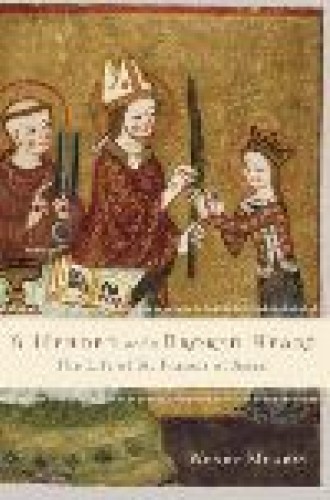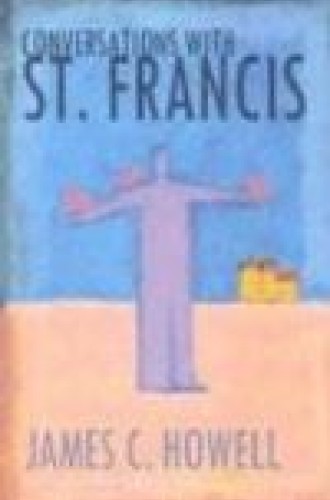A Mended and Broken Heart/Conversations with St. Francis
French Protestant pastor Paul Sabatier was the first modern biographer of St. Francis of Assisi. His book, first published in French in 1894, quickly became a best seller throughout Europe and was translated into English and published in the U.S. by 1906. Francis has been the most popular saint in the world ever since.
There have been many great books on St. Francis in the century since Sabatier, a few of them immortal. My favorite has always been G. K. Chesterton’s St. Francis of Assisi (1923); Chesterton really knew how to cut to the heart of a subject. And Nikos Kazantzakis’s penetrating novel Saint Francis (1956) still has the power to move readers, even after Martin Scorcese made his crazy film adaptation of it in the early 1980s.
With all of that, why do we need two more books about Francis of Assisi? Because the narrative of his life, and its meaning for faith then and now, can never be exhausted. Each generation sees a variety of attempts to come to terms with who Francis was. He is so appealing that authors who explore what he means for their times cannot help but strike a chord. I recall, for example, one of the most successful Francis books, which came out in the 1980s when I was in college: Julien Green’s God’s Fool was a sales hit for Harper & Row. These books by Wendy Murray and James Howell are quite good, though I would be surprised to see them do for our day what God’s Fool did for the Reagan generation.
Francis’s feast day came up again on October 4. He died late in the evening in Assisi on October 3, 1226. Remembrances of him, which usually happen in the form of animal blessings in churches, may not bring out crowds the way Mother Teresa’s canonization (perhaps in 2009) will, but many ordinary laypeople who don’t usually read religious books know some basic facts about Francis’s life.
He was raised in a wealthy home, and his father traveled back and forth to northern France as a cloth merchant. Francis went off to war and was either inept at soldiering, became a deserter or both. He repented of his sins in public fashion, embarrassing his respectable father. He stole from his father to give to the poor, and his dad imprisoned him in the basement of their home. When his father had to go away on business, his mother freed him, and Francis quickly returned to San Damiano, the remote church he had grown to love. He heard the voice of God there, telling him to “Go and rebuild my church.” Francis became a mendicant, gathered many followers, preached and helped the sick, and was considered a saint throughout Western Europe even before his death.
I am usually suspicious of books that begin by telling the reader how complex Francis was. This can be a ruse to draw in a reader, because in fact the man was not that puzzling, unless you consider it complex to attempt to imitate the life of Christ in one’s own. Unusual, certainly; but complex? I don’t think so.
Some of the most effective books about Francis, and about Francis and Clare of Assisi, were actually written for children. I’ve seen adults use them to learn about the man and gain a feel for his times. The greatest of these is Brian Wildsmith’s Saint Francis, originally published by Oxford University Press in 1995 and published in the U.S. by Eerdmans.
Evangelical journalist Wendy Murray begins A Mended and Broken Heart by arguing that Francis’s theology, as well as his personality, was complex. This is unusual as most writers have trouble discerning much theology in Francis at all. I believe that this is one of the secrets of the saint’s popularity in every age: he’s mostly praxis.
Murray aims to show her readers the real Francis behind the legends—not an original idea, but a good one because the saint’s early biographers were clearly hagiographers. Murray seems to have gone to great lengths to do her research. She doesn’t unearth anything new, but her thoroughness comes through. I admire her approach of insisting that to read about Francis and try to understand him is to be challenged by him.
However, Murray seems to feel challenged by Francis in ways that Catholic readers will not. For instance, she mentions that her students at Gordon College, an evangelical school in Massachusetts, questioned whether Francis was really a Christian because he “didn’t seem to apply to himself the principles of grace and mercy.” She never quite answers this objection or makes clear her own perspective.
Wrestling with Francis is the purpose of James Howell’s Conversations with St. Francis. Howell, a Methodist pastor and accomplished preacher, is clearly aiming to deepen his faith by delving into Catholic history and thought. He doesn’t attempt to retell the life of Francis but invites the reader into his own conversations with the saint. As he writes early on: “We will ask some questions, the hard ones that matter, and we will see what Francis has to say. . . . He can still speak across the centuries to me and to you.”
This engaging and meaningful approach makes no pretense of increasing our scholarly knowledge of the saint. Instead, with a delicate balance of modern and postmodern approaches (some things are clearly true, but most things will remain nuanced), Howell illuminates Francis’s life and teachings with much more recent ideas, books and authors that will be familiar to many: he employs Nicholas Wolterstorff to illuminate Francis’s troubling relationship with his father, Marilynne Robinson’s Gilead to put the value of possessions into proper perspective, Jonathan and Jennifer Campbell’s The Way of Jesus to discuss the idea of being Christian without the church, and scholar Nicholas Lash to address reading the Bible literally. As a result, the world’s most popular saint comes closer to being someone we can know and from whom we can learn.
There will always be more to say about Francis of Assisi. Books about him will never stop coming, and thank God for that. Publications on the scholarly side keep pouring forth as well. The Image of St. Francis, by Cambridge University scholar Rosalind B. Brooke, was published just two years ago and is one of the most thorough treatments ever of Francis’s medieval life and legacy. And no list would be complete without mention of New City Press’s three very fat volumes Francis of Assisi: Early Documents, which has become the standard reference for primary source material in English.
The way Francis lived his life, modeled after Christ, seems ridiculously impossible for Christians today. Surely that is why he is so important and so difficult.






